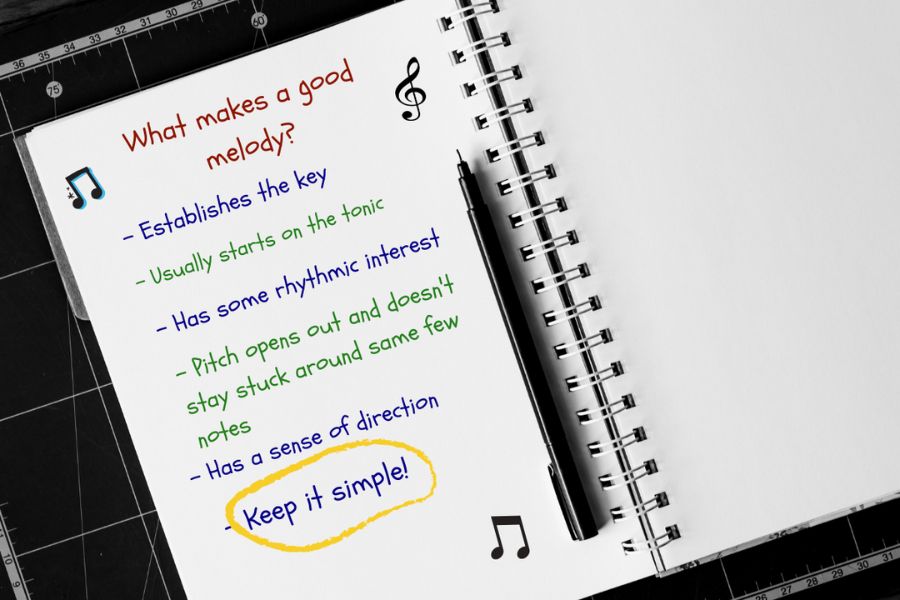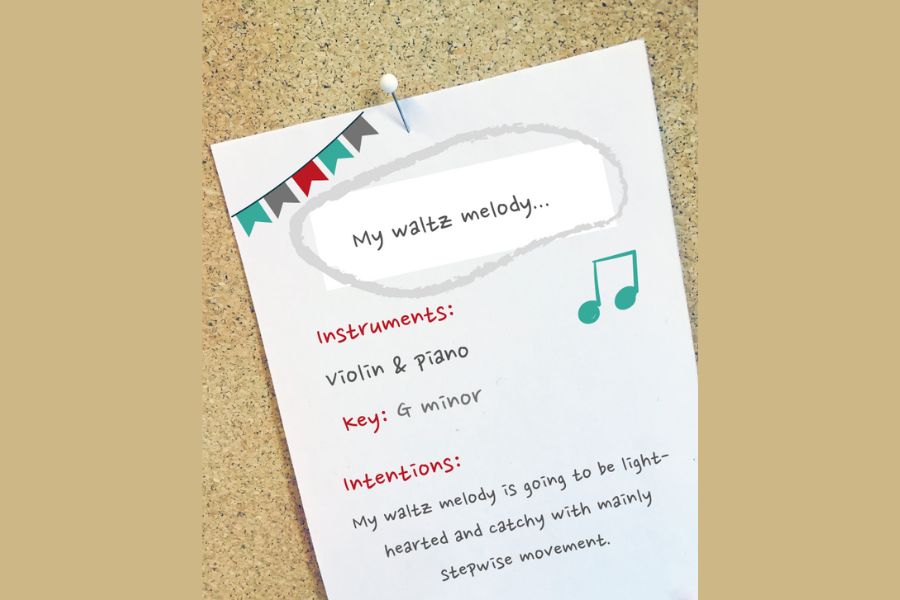In our last lesson we spent some time thinking about the kind of waltz we want to compose and putting together a short plan. Now we’re going to get practical and start composing! Some people like to begin a composition with the chords first – if that’s what you’d prefer to do, that’s fine – please do that. I’m going to start with the melody and then create the chords.
I’m going to take you through how to write a melody, but if you want to go into more depth or would like a refresher, why not enrol in our course: How to compose a great melody, where I take you step-by-step through melody-writing. You’ll find a number of examples in this lesson – please listen to them and use them to generate ideas for your own melody.
In this lesson we’ll cover:
- What makes a good melody?
- Establishing the key
- Using rhythm effectively
1. What makes a good melody?

Creating your melody
We’re going to start by composing a 4-bar melodic phrase. In the next lesson we’ll develop this tune.
What to think about first…
- Think about the mood and character you want to create.
- Establish your chosen key (write out key signature if you like)
- Set a couple of intentions. This is where you give some purpose to your melody and decide what kind of character or feeling you want to present.

Get a piece of paper and jot down some ideas and intentions for your waltz. You can use the example above to help you.
By the end of the next lesson we will have created an 8-bar phrase, made up of two 4-bar mini phrases. I’ve composed three 4-bar melodies below, and then I’ll choose one to develop. Hopefully these will give you some inspiration.
Which one did you like the most? They are all quite similar, because they fit in with my intentions which I wrote down above. I’ve decided to use melody #2 for my composition so I’ll develop this one in the next lesson.
2. Establishing the key
It’s really important that we establish the key in the first 4 bars. This helps the audience to feel secure when listening to the music. The following steps can help to keep the key of your melody clear:
- Start on the tonic (or dominant)
- Finish the first phrase on the dominant
- Perhaps use triadic or scalic movement, using notes from the chosen key.
3. Using rhythm effectively
Giving thought to the way you use rhythm in your melody can add interest and provide a way of developing your tune later on. It doesn’t mean just adding in rhythmic features for the sake of it, but a well-placed rest or dotted rhythm can give real character to a tune.
In this section we will explore:
- Dotted rhythm
- Anacrusis and off-beat
- Use of rests
Using the examples above as a guide, compose your 4-bar melody. Remember:
- start on the tonic
- Use 3/4 time signature
- At the end of bar 4, land on the dominant
And why not try out some different rhythmic ideas to add interest to your melody?
Hopefully you now have the first 4 bars of your melody composed! In the next lesson we’re going to compose the next 4 bars to complete the melody.





